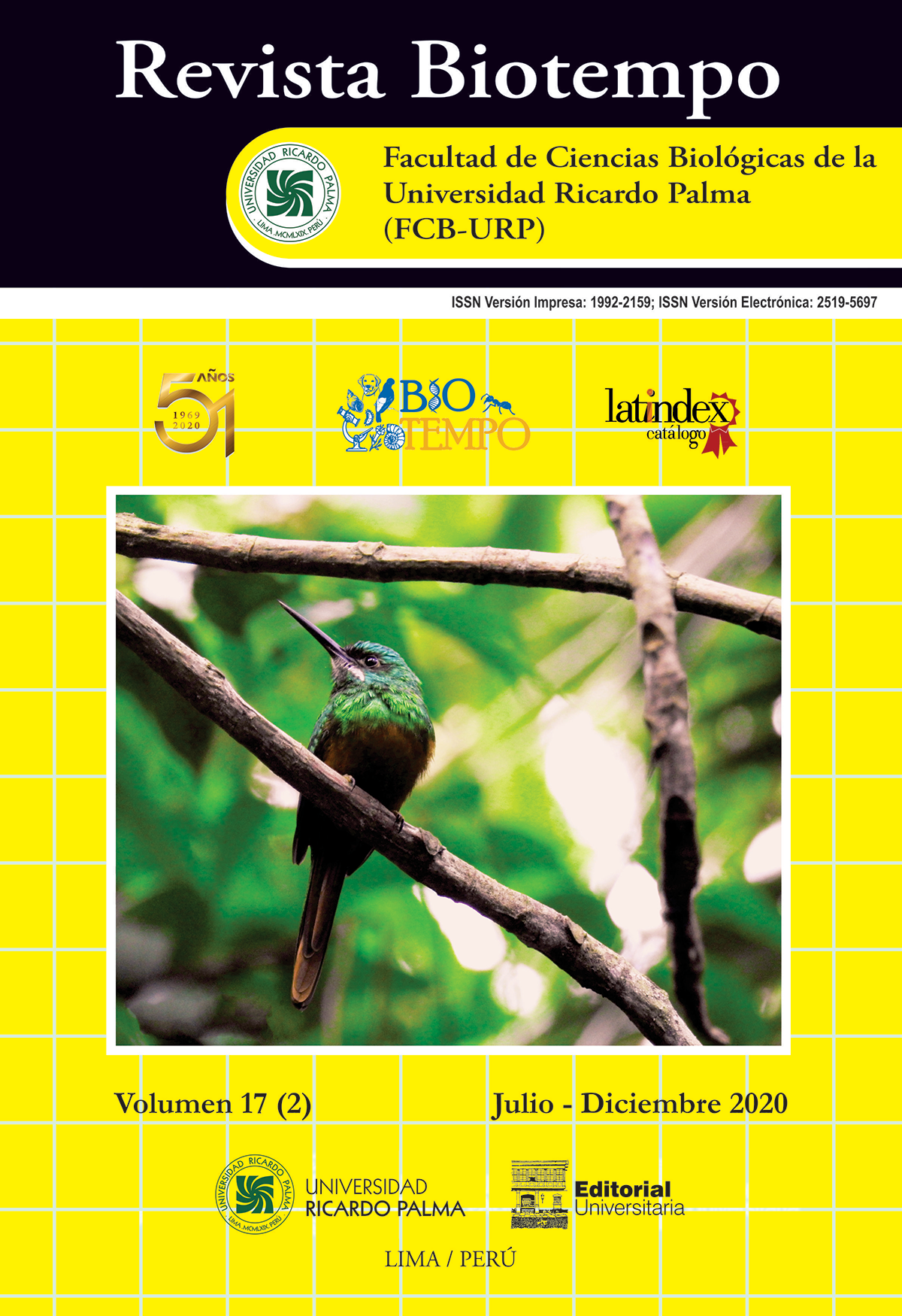COAGULANT AND PHOSPHOLIPASE A2 ACTIVITY OF THE SEA ANEMONE PHYMANTHEA PLUVIA (DRAYTON, 1846) AND THE TARANTULA GRAMMOSTOLA ROSEA (WALCKENAER, 1837) VENOMS
DOI:
https://doi.org/10.31381/biotempo.v17i2.3322Keywords:
coagulant, phospholipase, sea anemone, tarantula, venomAbstract
The coagulant and phospholipase A2 activity of the sea anemone Phymanthea pluvia (Drayton, 1846) and tarantula Grammostola rosea (Walckenaer, 1837) venoms from San Bartolo and Matucana, Lima, Peru, respectively, have been studied. The sea anemone venom was obtained by hypotonic shock, while the tarantula venom was extracted from the chelicerae and was "diluted" in saline solution. Electrophoretic analysis of the soluble venom showed the presence of protein bands. Th e coagulant and phospholipase activities of both venoms were measured. Phospholipase activity was found showing a diff usion halo of 2.76 cm for P. pluvia and 3.35 cm for G. rosea. Th e coagulant activity, tested on human citrated plasma, gave a positive result for P. pluvia, coagulating the plasma in 10 min and 16 min for G. rosea. It is concluded that both the soluble venoms of P. pluvia and G. rosea have phospholipase and coagulant activity.










